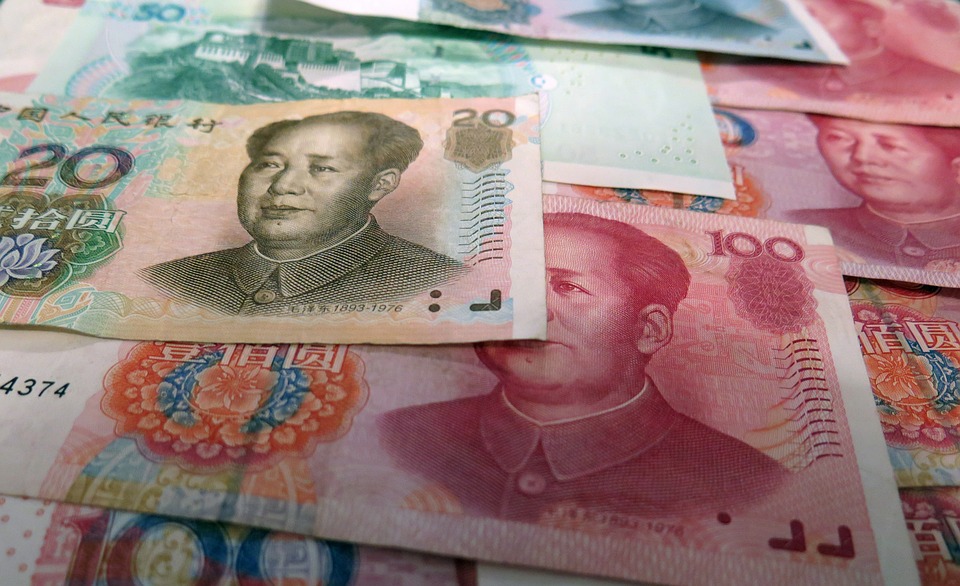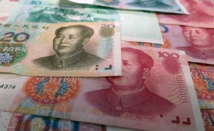Agency Standard & Poor`s reported yesterday about amendments of its forecast of China's sovereign credit rating. The outlook changed to negative from stable because of the risks of deterioration of the fiscal situation in the country. In early March, the agency Moody`s also lowered the outlook China's rating (yet it was left at a comparable level - Aa3). Among the reasons were the risks of non-compliance of promised reforms and increased debt burden. By the way, the third of the "Big Three" agencies - Fitch - already assessed China one step below: A-.
"Rebalancing the economy is likely to take longer than expected, which will lead to increased economic and financial risks and creditworthiness of the Chinese government", - states S&P’s report. The agency thinks that the main threat is too rapid credit growth (about 14% per year), exceeding nominal GDP growth. Another problem is the very high proportion of investment. in relation to GDP, it is 43.7% for the "normal" 30-35% in China.
Against this background, maintaining growth would require new government investment and increasing debt load by 3-4% per year, as projected at the agency. According to the official figures, the current total public debt to GDP is 41% of GDP, including debts of the regions previously referred to public debt (limited by 16 trillion yuan (23.6% of GDP). Recall that Beijing now has to solve the problem of high debt load of regions who took out loans in state banks through special intermediary structures (through the issuance of new government bonds). This is expected to significantly reduce risks for the banking system, with their brewing problem of high levels of bad debt. Last year, government issued bonds for 5 trillion yuan (about $ 750 billion); issuance of municipal bonds rose sharply as well (from 0.5 trillion to 3 trillion yuan). Bonds of banks were also increased (almost four times - up to 10 trillion yuan).
Foreign investors will be able to take part in the new offerings, too as their access to the debt market is being gradually expanded. In March, the Central Bank of China has considerably facilitated access to foreign banks, insurance companies and funds to the interbank bond market. Yet so far, the foreign participants accounted for only 1.6% of the market (its volume is estimated at 48 trillion yuan, or $ 7.3 trillion; there also are restrictions for foreign investors - for example, to sell bonds only three months after the acquisition).
As for the external debt, which is often regarded as one of the major risks for the Chinese corporate sector, its volume is reduced: at the end of the third quarter of 2015, according to the SAFE, it stood at $ 1.53 trillion, or 14% of GDP (the public sector accounts for only $ 105 billion of this amount), that is $ 150 billion lower than in June last year. Note that the total debt of the corporate sector load is around 160% of GDP (about $ 16 trillion). As noted in the JP Morgan, the weakening of the renminbi contributes to the popularity of credit in the national currency and maturity dollar-denominated debt, but the debt burden cannot be considered healthy, and sooner or later the corporate sector will face the need to reduce the total load.
source: bloomberg.com
"Rebalancing the economy is likely to take longer than expected, which will lead to increased economic and financial risks and creditworthiness of the Chinese government", - states S&P’s report. The agency thinks that the main threat is too rapid credit growth (about 14% per year), exceeding nominal GDP growth. Another problem is the very high proportion of investment. in relation to GDP, it is 43.7% for the "normal" 30-35% in China.
Against this background, maintaining growth would require new government investment and increasing debt load by 3-4% per year, as projected at the agency. According to the official figures, the current total public debt to GDP is 41% of GDP, including debts of the regions previously referred to public debt (limited by 16 trillion yuan (23.6% of GDP). Recall that Beijing now has to solve the problem of high debt load of regions who took out loans in state banks through special intermediary structures (through the issuance of new government bonds). This is expected to significantly reduce risks for the banking system, with their brewing problem of high levels of bad debt. Last year, government issued bonds for 5 trillion yuan (about $ 750 billion); issuance of municipal bonds rose sharply as well (from 0.5 trillion to 3 trillion yuan). Bonds of banks were also increased (almost four times - up to 10 trillion yuan).
Foreign investors will be able to take part in the new offerings, too as their access to the debt market is being gradually expanded. In March, the Central Bank of China has considerably facilitated access to foreign banks, insurance companies and funds to the interbank bond market. Yet so far, the foreign participants accounted for only 1.6% of the market (its volume is estimated at 48 trillion yuan, or $ 7.3 trillion; there also are restrictions for foreign investors - for example, to sell bonds only three months after the acquisition).
As for the external debt, which is often regarded as one of the major risks for the Chinese corporate sector, its volume is reduced: at the end of the third quarter of 2015, according to the SAFE, it stood at $ 1.53 trillion, or 14% of GDP (the public sector accounts for only $ 105 billion of this amount), that is $ 150 billion lower than in June last year. Note that the total debt of the corporate sector load is around 160% of GDP (about $ 16 trillion). As noted in the JP Morgan, the weakening of the renminbi contributes to the popularity of credit in the national currency and maturity dollar-denominated debt, but the debt burden cannot be considered healthy, and sooner or later the corporate sector will face the need to reduce the total load.
source: bloomberg.com



















